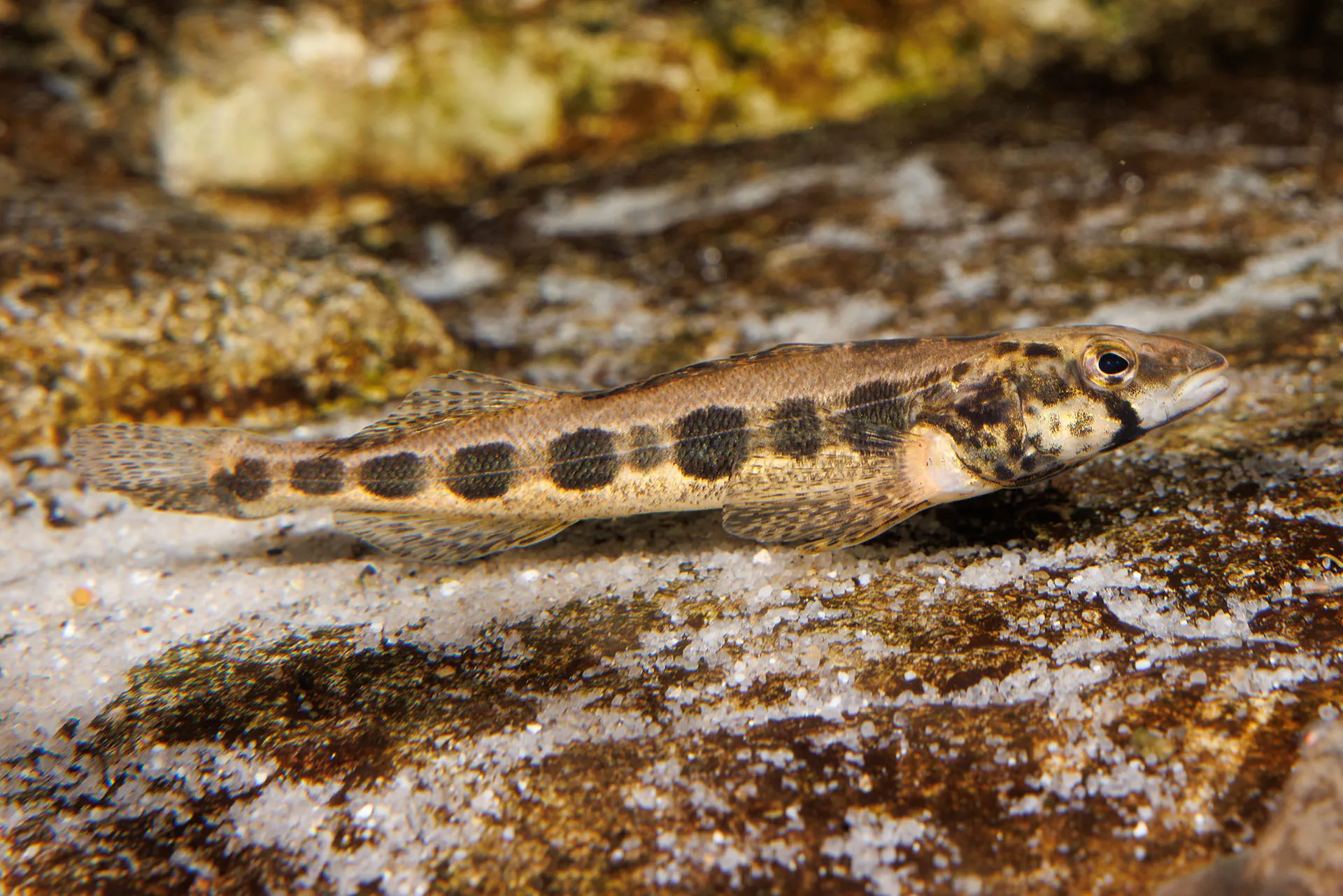A group of Longhead Darters, a rare species that has never been exhibited at an aquarium or zoo, is now viewable by the public in the Aquarium’s Appalachian Stream exhibit near the Appalachian Cove Forest gallery exit.
This first-of-its-kind appearance is the latest chapter of a project that began several years ago at the Tennessee Aquarium Conservation Institute.
Longhead Darters (Percina macrocephala) were presumed to be extirpated (completely removed) from Tennessee’s Duck River in the ’70s. The apparent disappearance of this plucky bottom-dweller was thought to stem from a combination of factors, including the construction of Normandy Dam and the creation of the Normandy Reservoir in 1976, the addition of wastewater treatment plants leading to poor water quality and habitat loss, but scientists wanted to be certain of its status before determining if work to restore it could commence.
“Six or seven years ago, we thought, ‘I wonder if Longhead Darters are really gone, maybe we should take a second look,’” says Aquatic Conservation Biologist Dr. Bernie Kuhajda. “If they are really gone, maybe we should get some adults, see if we can propagate them. If we’re successful and get high enough numbers, we might be able to start a reintroduction program.”
The Longhead Darter’s status is still under review by the federal government, and they are listed as endangered in several states.
The process Dr. Kuhajda suggests would be similar to the conservation institute’s Lake Sturgeon reintroduction program, in which adults from a healthy population in another river system (in this case, the Wolf River in Wisconsin) are used to produce offspring that can be released into rivers where the species once thrived.
With special permission from Old Stone Fort State Archaeological Park in Coffee County, Tennessee, a team from the Conservation Institute snorkeled multiple locations along the upper Duck River over several days, searching for this rare and elusive darter with no success. Though the water quality had substantially improved over the last decade, and habitat looked suitable, it appeared the Longhead Darter was indeed extirpated from the Duck River.
With this information in hand, scientists with the Conservation Institute traveled to the Barren River System near Bowling Green, Kentucky, where Longhead Darters can still be found in small tributaries. Working with the Kentucky Department for Natural Resources (KDNR), they collected about 15 broodstock to serve in human care as a healthy breeding population. Offspring from these fish would be raised at the Conservation Institute with an aim of beginning the work of restoring Longhead Darters to the Duck River.


Since very little is known about this species, ichthyologists with KDNR were hoping that the knowledge gleaned by our scientists would help with overall efforts to preserve the Longhead Darter in all river systems. Information about their life history, feeding, habitat choice, and breeding are scarce so any data our work could provide would offer valuable insights into the species’ natural history.
“They were very excited for us to be using these broodstock to try to propagate them,” Kuhajda says. “Even though they are not all that abundant in Kentucky, they thought it was a really good use of the fishes for this project.”
Unfortunately, the lack of information about the species made it difficult to determine how to successfully propagate them in human care.
“They tried different substrate types and different sizes of gravel, different logs and types of coverage, different temperatures and different flows,” says Reintroduction Biologist II Sarah Kate Bailey.
Despite the best efforts of experts at the Conservation Institute, attempts to produce a large enough population of Longhead Darters to sustain them if reintroduced into the Duck River successfully stagnated. Those efforts did yield data that should aid any future work with the species.
“If we do restart this, we know some spawning temperatures, we know that they stress out really easily,” Kuhajda says. “Even though we didn’t have success, we learned enough to position ourselves to be much more successful in the future.”
The pause placed on our efforts to propagate the Longhead Darter did have a silver lining. The offspring of those darters are now serving as ambassadors for their species in the Appalachian Stream exhibit.
Swimming along at substrate level in the exhibit’s small minnow and darter exhibit, these little fish (actually fairly large for darters) are the first of their kind to be displayed at any institution in the world. That’s an important milestone for the species.
“Biodiversity is under the surface,” Kuhajda says. “Unless you take a seine and pull it through a creek, unless you put on a mask and snorkel and jump in, you have no idea what lives down there.”
Seeing Longhead Darters here at the Aquarium matters, Kuhajda adds, because it helps build direct connections between the facility’s guests and the fishes in the waterways just outside their doors.
“I think it’s really neat that even professionals in this field may not have seen or worked with them,” Bailey says. “Now, even the public gets to see them. therwise, you probably wouldn’t get that chance unless you were going snorkeling or seining, and most people don’t have the opportunity to do that.”
